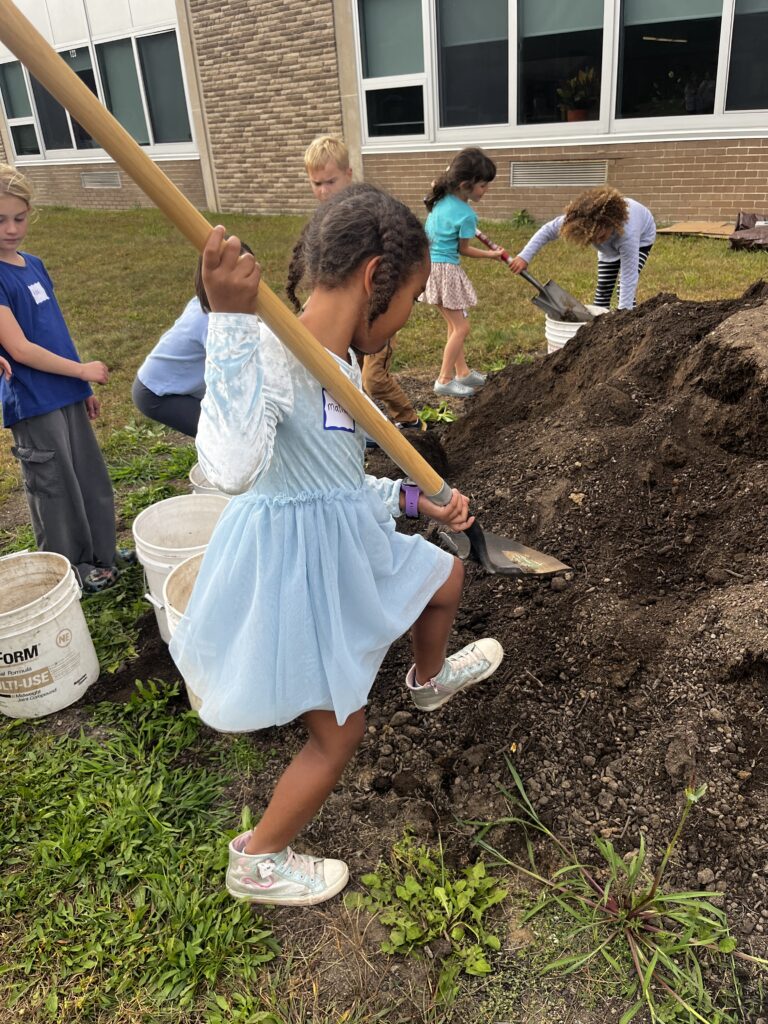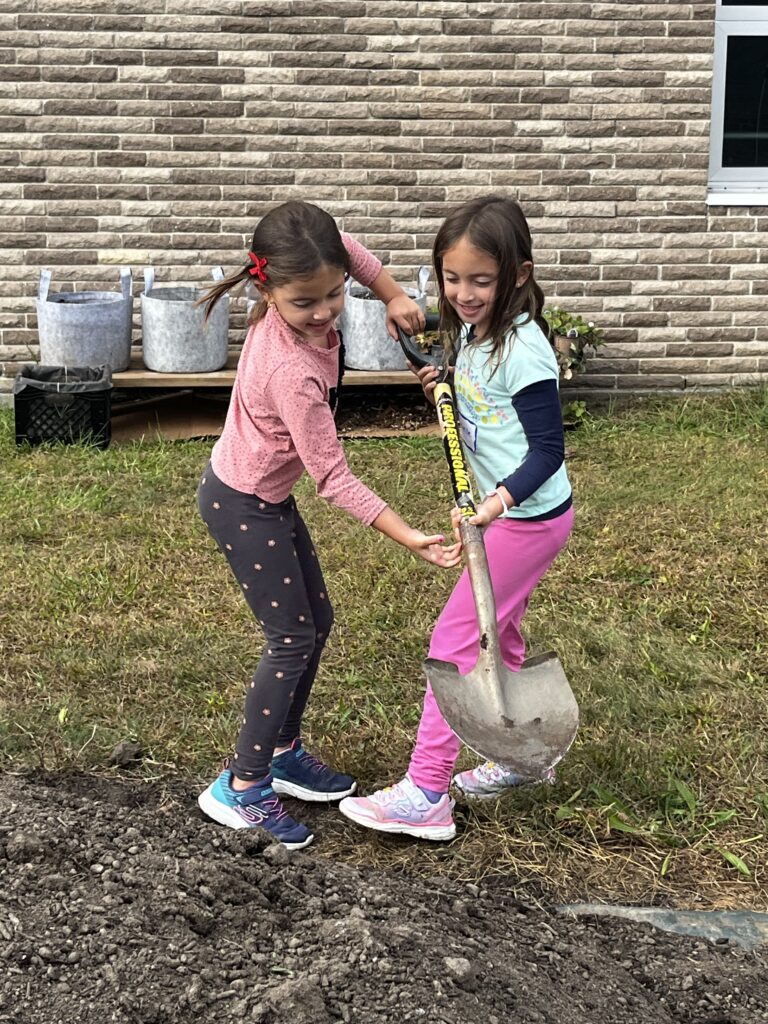Elementary School Garden & Garden Club

For the past year or so we’ve been speaking with Chancellor Livingston School in Rhinebeck about installing a garden on the grounds. Supported by superintendent of schools Albert Cousins and CLS principal Brett King, in late spring we got the go-ahead to install two raised beds.
Rhinecliff carpenter Matt Lake, whose son and daughter attend CLS, built two raised beds whose hemlock planks are wide enough for students to sit on, giving them better access to the growing space. Dirty Gaia’s program director Kaitlin Doherty, also a CLS parent, grew Jill-Be-Little mini pumpkins from seed and transplanted them into the beds over the summer.
By the time a group of CLS parents, kids and friends gathered at the garden in mid-August, the pumpkin vines had climbed the arching trellis between the two beds and produced Lilliputian orange squashes, a cheery greeting. The volunteer crew, which included Food Services Director Larry Anthony, top-dressed the beds with soil and compost before sowing Easter Egg radishes, mixed lettuces, provider bush beans, strawberry plants and nasturtiums, giving them a chance to get rowing before students returned for the new year.


The beds were bursting by the end of September when Dirty Gaia’s Monday after-school Garden Club, conceived and led by Kaitlin, began. On Mondays, after gathering in the lunchroom, affixing their name tags (mostly on shirts, but maybe on a leg that ends in a sparkly sneaker) and downing some Goldfish for sustenance, the mighty team of first through fifth graders makes its way through the corridors to a swathe of lawn between two wings of the school. Flopping their torso-size backpacks on the ground, they take a seat on one of the yoga mat squares arranged under a pop-up tent. Kaitlin, who has a background in childhood education, starts with a rundown of what will happen during class—usually some planting, some harvesting and a tasting of fresh produce from the beds, as well as games and other activities that add to an overall understanding of how food grows.
During the first class, students snipped leaves of mixed baby lettuces which were collected and delivered to the cafeteria to be used for lunch the next day. In another class, they planted garlic in grow bags and played a spinoff of Hedbanz: each student got a card illustrated with a fruit or vegetable, which they couldn’t see, tucked into an elastic headband. Asking yes/no questions of a partner (who could see the card), they had to figure out what fruit or veggie they were wearing. In a perfect world the Q and A might sound something like:
“Am I red?”
“Yes.”
“Do I have seeds?”
“Yes.”
“Am I a strawberry?”
In reality, it didn’t always go quite so smoothly but persistence paid off and new cards demanded.


The taste-testing part of the class is always popular, even if produce gets a thumbs down. Freshly picked green beans and lettuce were crowd pleasers, radish wheels deemed spicy, in a good way to some, not so much to others. Minced garlic? A hard sell—but everyone gave it a try.
These kids are impressive gardeners. They wrangled flattened cardboard packaging, some pieces nearly twice their height, into a neatly overlapping arrangement over a grassy area for a sheet-mulching project. After shoveling compost from a large mound into 5-gallon buckets, they lugged the buckets over to the cardboard, spreading the compost in preparation for a strawberry bed. That done, spontaneous cartwheels were in order for several of the participants.
Worms are a general cause for excitement, everyone wanting to handle them, one wanting to take “hers” home. (After some negotiation and adult sleight of hand, the worm was returned to the earth.) When a toad was spied, it was scooped up by a fifth grader and, after a round of admiring oohs and ahhs from fellow amphibian-lovers, chaperoned to the woods with dignity.

The garden, its two beds filled with lettuce, spinach, strawberries, radishes, kale and pollinator-friendly flowers, is still in its early days. In the spring, after soliciting input from teachers, parents and students, Dirty Gaia’s Sue Sie created an overall design that includes fencing, more raised and in-ground beds, a teaching pavilion, a sensory and herb garden, and an assortment of fruit trees to create shade as well as seasonal produce.
It’s so encouraging to see the enthusiasm the students have for the garden and for the natural world in general. Big thanks to Mr. Cousins and Mr. King, as well as all the parents and students who have helped us get it and the Garden Club underway. ——Margot Dougherty
